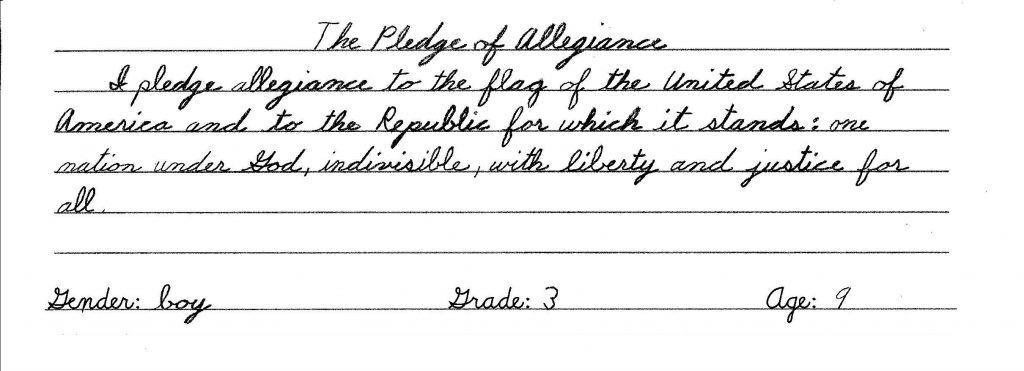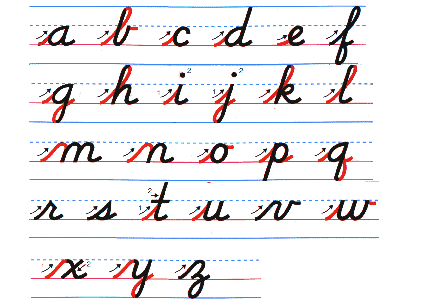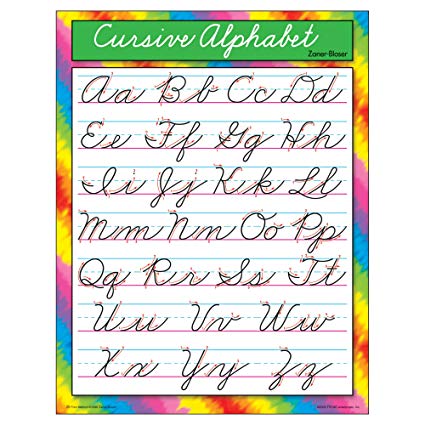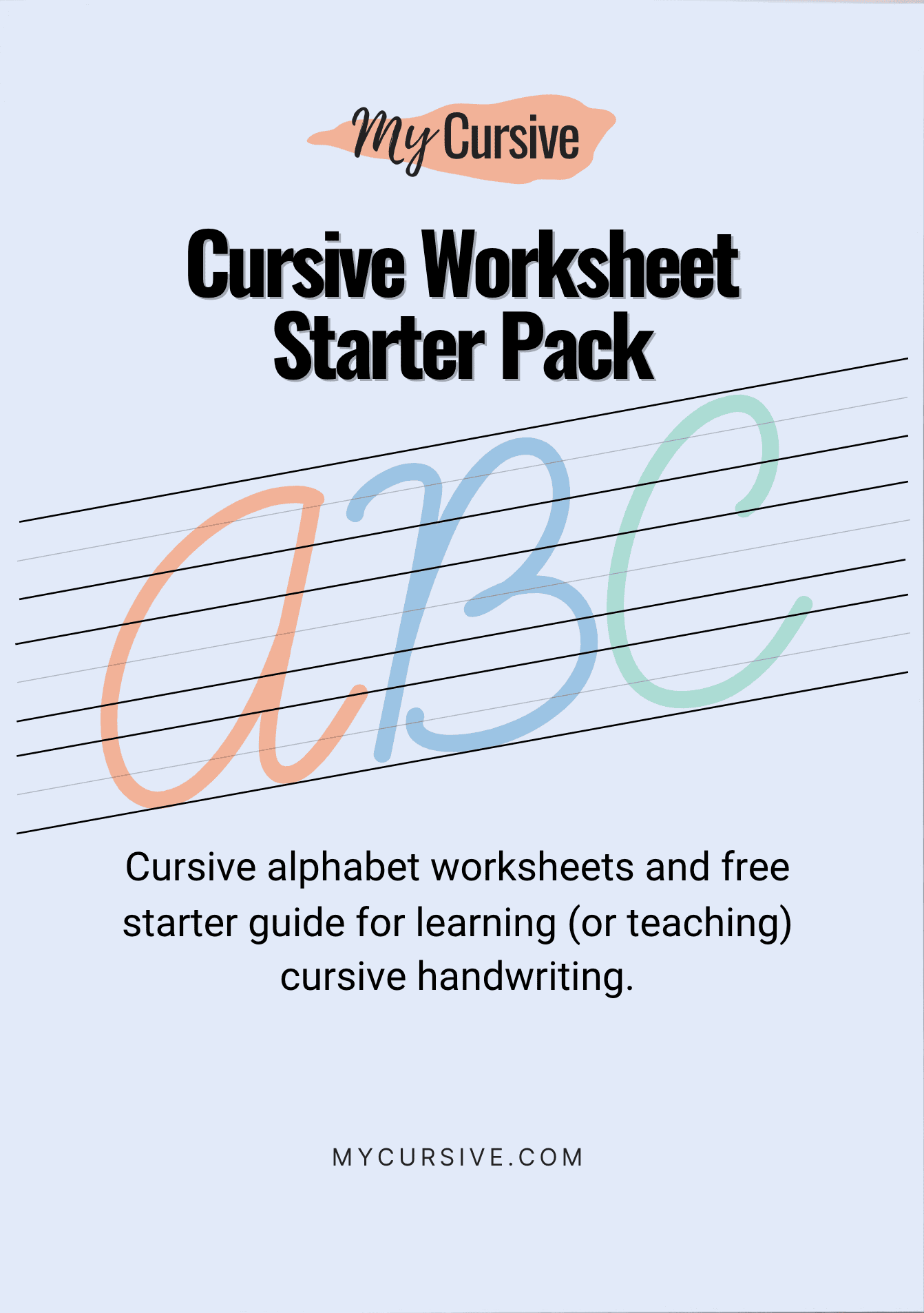
Cursive writing is a style of writing where all the letters in a word connect. The interconnection gives a piece of writing a beautiful pattern that is pleasant to the eye. Cursive has been around for hundreds of years and is still taught in schools across the U.S.
We shall be looking at this writing and how one can discover their cursive writing style.
Cursive was a common writing practice for decades and is now only popular used when signing a name.
There are different types of cursive writing styles. We list several of the most popular types of cursive writing being taught, along with a brief description, below. You can also find some tips when choosing a cursive style for yourself and children.
Let’s dive into popular cursive writing style.
 Source: New American Cursive
Source: New American Cursive
New American cursive is a relatively easy style to teach. Often an entry-level cursive writing course. All the letters are written slanting a bit to the right. The type is simple since complicated strokes are not included in writing. It is not as taxing as other cursive styles when it comes to left-handed people and children.

In this cursive writing, the hooks on the tails of every letter connect to the next tail of another letter. To learn this cursive form, one must go through D’Nelian manuscript to master it since it is the basis of the cursive writing. In this type, the writer writes continuously without lifting the pen to obtain non-stop strokes.

The cursive handwriting contains letters that slant to the right with hooks similar to those of D’Nealian’s letter structure. It also has capital letters that are simplified. This is the style many of us grew up on in grade school and cut our teeth learning to write our name with Zane-Bloser.
Hand writing without tears is cursive writing designed to make letters clear with the least continuous flow strokes. This style is more for teaching children basic cursive writing and reading. It is almost like typed letters, meaning great clarity and letter recognition.
We’ve been working hard to make it easier for parents and teachers to teach their students to write in cursive. Now, the MyCursive Cursive Curriculum is live!
In our course and curriculum, your learners will learn to write in a font, called “Learning Curve.” For parents, there is a full step-by-step video course your kids can follow along with. For teachers, we offer the full curriculum, organized in a way that helps you teach it to students.
Both the course and curriculum include:
Oh, and here’s a quick example of one of the video lessons, from the course:
This is one of the oldest, and arguably most beautiful forms of writing. It’s also a difficult place to start when beginning your cursive journey. That said, it’s really fun to look at and the ability to write in this gorgeous style is something worth striving to achieve.
This type of cursive is essentially calligraphy, on is an introduction to the entire world of calligraphy writing.
Fun fact: Another name for Spencercian is “Copperplate” and you can find out more information on it here.
As with reading, children are introduced to the art of writing right from infancy. By observing you as you write, your toddler starts understanding from a tender age that written words are important. From that point, it’s only a matter of time before they start scribbling and drawing.
A crucial factor that you should take into account when you’re teaching your child handwriting is the type of font you use. You want to use a font that’s not only colorful but also readable.
Here are a couple more tips to help you choose the right font for teaching your toddler how to write.
There are a growing number of states where public schools are required to teach cursive. If cursive is taught in your child’s public school, then you’ll likely want to use the same font or style!
Further reading: We have an updated list of the states legally required to teach cursive.
When picking a font to train your child, look for one that has a warm and friendly design. In other words, all the letters and shapes should be designed in a simple way.
The easiest way to know if a font is simplified enough for a toddler is to focus on the counters (the enclosed sections within letters). These should be circular and open as opposed to being rectangular or angular.
Also, stay away from fonts that use unconventional letterforms. Sassoon Primary is a good example of a font that meets all these requirements, and it’s specially designed for children.
Another thing to consider is whether the font uses large or short x-height. Put simply; this is the height of lowercase letters that’s based on the height of lowercase x. For a kid’s font, you’ll want to go for one with larger x-heights as it will be easier to read.
Other fonts that are often recommended for preschool and school-age kids are the sans and serif designs. However, it’s vital that you double-check to ensure that the font doesn’t have any extreme letterforms that can impede readability. For instance:
If you’re looking for a font that will help your toddler learn how to write, then you should avoid capitalization whenever possible.
This particularly applies to children who are yet to learn how to differentiate lowercase from uppercase letters. For them, a font that uses all caps can be pretty confusing and can impede reading.
If you’re using a text to train your child handwriting, you’ll also need to consider the spacing between texts. That is, there should be plenty of white space and very few graphics and illustrations. This way, your kid can focus on the letter shapes and forms.
For the young reader in your life, the ideal font choice is one that is simple enough to read but also playful and colorful. The radiance in this font captures their interest; hence, increasing their willingness to learn writing.
On the other hand, simplicity helps them to read and learn how to craft one letter at a time. This means that you shouldn’t pick a font with too many surprises or unconventional letter shapes.
That said, there are a couple of fonts that meet all these requirements; hence fit for teaching purposes. Plantin Infant, Sassoon Primary, Helvetica Textbook, and Tuffy Infant are all designed with young learners in mind.
To discover your cursive handwriting style, be sure to do the following; Explore all the above methods of cursive writing
Developing cursive writing is an art that one can learn like you can learn drawing, pottery, and calligraphy. It all needs interest and focus. Be sure to check out our other resources to learn more!

